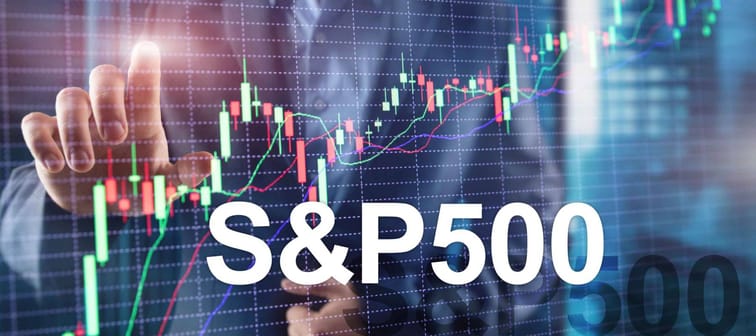What are the top ETFs on the S&P 500?
There are three major S&P 500 ETFs that track the index as a whole. Because they all track the performance of the same index, there are many similarities between the three. But it's also important to note the differences. Here's a quick comparison of the three major ETFs:
| SPDR S&P 500 ETF | ISHARES CORE S&P 500 ETF | VANGUARD S&P 500 ETF | |
|---|---|---|---|
| Ticker Symbol | SPY | IVV | VOO |
| Company | State Street Global Advisors | BlackRock | Vanguard |
| Total Assets | $331.05 billion | $249.65 billion | $194.97 billion |
| Expense Ratio | 0.09% | 0.03% | 0.03% |
| Previous Closing Price | $383.63 | $385.07 | $352.69 |
| Year-to-Date Return | 2.60% | 2.60% | 2.60% |
(Data current as of March 5, 2021)
Meet Your Retirement Goals Effortlessly
The road to retirement may seem long, but with WiserAdvisor, you can find a trusted partner to guide you every step of the way
WiserAdvisor matches you with vetted financial advisors that offer personalized advice to help you to make the right choices, invest wisely, and secure the retirement you've always dreamed of. Start planning early, and get your retirement mapped out today.
Get StartedHow did we determine the best ETF?
The three major S&P 500 ETFs are remarkably similar. And this makes choosing the right one difficult. The good news is that because of their similarities, you won't notice a significant difference in the costs or the return. Let's talk about a few factors to consider as you choose the right fund for you.
1. Check the expense ratios
The expense ratio of an ETF is a measure of how much of a fund's assets are used for operating and administrative costs. It's found by dividing the total fund costs by the total fund assets.
Because an S&P 500 ETF passively tracks a particular index, these funds come with lower expense ratios than actively managed funds. As it currently stands, two of the major S&P 500 ETFs tie for the lowest expense ratio. Both the Vanguard S&P 500 ETF (VOO) and iShares Core S&P 500 ETF (IVV) have expense ratios of just 0.03%.
2. Look for high liquidity
Liquidity refers to how easy it is to buy and sell an asset. The more liquid an ETF, the easier it is to convert your shares into cash by selling them.
The most important factors in determining the liquidity of an ETF are a) the number of shares of its underlying assets and b) the ETF's trading volume. Since all S&P 500 ETFs track the same index, the number of underlying shares is the same.
So we look at the ETF trading volumes, which is a secondary factor in determining ETF liquidity. As of March 5, 2021, the SPDR S&P 500 ETF (SPY) has the highest average volume, likely making it the most liquid.
3. Look for low index tracking error
Tracking error refers to the difference between the return of a fund and the return of the benchmark it tracks. To determine this, we check the performance of the ETF for some time period (such as a few months or one year) and compare it to the return of the underlying assets for the same period. For the three ETFs mentioned above, we'd compare the return of each fund to the S&P 500 index.
You may be able to easily find this information on the fund's page on the company's website. For example, Vanguard's website has a chart that compares the tracking error between the S&P 500 and its S&P 500 ETF. As of the end of February 2021, there's no difference between the year-to-date (YTD) return of the two.
4. Be aware of trading costs
Trading costs consist of the commissions and other transaction costs you pay when you purchase ETF shares. Many major online brokers now offer commission-free trading. So this may not be a concern. But before investing in an ETF, check with your broker to find out if they charge a commission.
Brokers that offer commission-free trading include:
However, many brokers offer commission-free trading on their own ETFs but charge a fee if you purchase another company's fund. For example, you can buy from Vanguard the Vanguard S&P 500 ETF (VOO) without paying a commission, but you can expect to pay a commission when you purchase shares of a competing fund.
5. Lowest Price
There's not a substantial difference between the price of one major S&P 500 ETF and the next. But it's worth considering before you buy. As of March 5, 2021, the prices on these ETFs range from $352.69 to $385.07.
When you're shopping for the right ETF for you, consider how many shares you can buy for your money. As the prices stand at the time of writing, $1,500 would get you four shares of the Vanguard S&P 500 ETF (VOO) but just three of the iShares Core S&P 500 ETF (IVV), assuming you're buying full and not fractional shares.
Estimated yield and return
Because all S&P 500 ETFs track the same index, there likely won't be a significant difference in the yield from one fund to the next. As of March 5, 2021, each of the major S&P 500 ETFs has the same YTD yield of 2.6%.
But if you look at the bigger picture, you'll notice slight differences in the returns from one fund to the next. Over the past five years for example, the Vanguard S&P 500 ET (VOO) has a total return of 111.6%. The return for the SPDR S&P 500 ETF (SPY) was 110.8% for the same period.
Stop overpaying for home insurance
Home insurance is an essential expense – one that can often be pricey. You can lower your monthly recurring expenses by finding a more economical alternative for home insurance.
SmartFinancial can help you do just that. SmartFinancial’s online marketplace of vetted home insurance providers allows you to quickly shop around for rates from the country’s top insurance companies, and ensure you’re paying the lowest price possible for your home insurance.
Explore better ratesHow to check for the lowest fees
Before you purchase an ETF — or any investment, for that matter — it's important to look into the fees you'll pay. Most often, fees include trading fees and expense ratios. While many brokers now offer commission-free trading, you'll still be on the hook for the fund's expense ratio.
Start by contacting your broker to ask if they charge a commission on trades. If you work with a financial advisor, they may charge either a commission or a percentage of your portfolio. So be sure to ask. Then find the ETF's expense ratio either by checking with your broker or visiting the fund's page on the provider's website.
How many ETFs should you buy?
One of the most important tenets of investing is diversification. In other words, don't put all your eggs in one basket. So you might wonder whether you should diversify by purchasing multiple S&P 500 ETFs.
Because each S&P 500 ETF tracks the same index, it's not necessary to buy more than one. You're already accessing 500 different companies through one of these funds. Buying a second S&P 500 ETF would simply mean you're buying into the same 500 companies again.
If you're worried about diversification, explore other investment options.
More: How to invest your money
The bottom line
There are three major ETFs that track the performance of the S&P 500. Because they track the same index, all three are quite similar. But before buying, be sure to compare each fund's expense ratio, liquidity and trading price. And ask your broker about any trading costs.
Sponsored
Follow These Steps if you Want to Retire Early
Secure your financial future with a tailored plan to maximize investments, navigate taxes, and retire comfortably.
Zoe Financial is an online platform that can match you with a network of vetted fiduciary advisors who are evaluated based on their credentials, education, experience, and pricing. The best part? - there is no fee to find an advisor.








